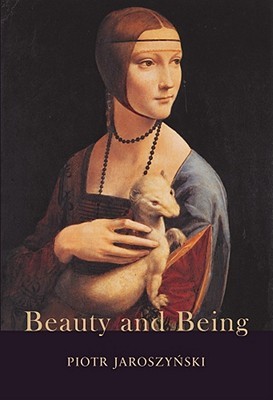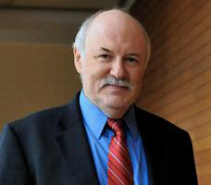Margaret I. Hughes Review of Jaroszynski Beauty and Being: Thomistic Perspectives
Beauty and Being: Thomistic Perspectives. By Piotr Jaroszyński. Toronto ON: Pontifical Institute of Mediaeval Studies, 2011. Pp. 269. $85.00 cloth.
Piotr Jaroszynski's Beauty and Being: Thomistic Perspectives argues that the investigation into beauty must have a foundation in metaphysics because beauty is a property of being. Jaroszynski's deft weaving of a history of metaphysics with a history of thought on beauty and aesthetics in the first two parts of the book provides the context in the third part of the book for an articulation of a theory of beauty. Beauty, he asserts there, involves a relation between being and a person. Consequently, Jaroszynski's grounding of beauty in being has important consequences, not only for aesthetics but also for the understanding of human nature.
The first two parts of the book are historical, as the title of each part suggests: "Theories of Beauty in Antiquity and the Middle Ages" and "Beauty in Aesthetics." The division between these two sections is not based on mere chronological convenience, however. It is a division rooted in differences over the conception of being. Ancient and medieval philosophers investigated being primarily and beauty only incidentally. Jaroszyński asserts that to extrapolate theories of aesthetics from ancient and medieval thought apart from a study of reality would be anachronistic and inaccurate. The inclination to engage in such an ungrounded study is presumably the consequence of the modern development of aesthetics. Aesthetics is a post-Cartesian pursuit based on an abstract concept of being that has a subjective starting-point and that claims that being is ultimately unknowable. If being cannot be known, then there is no basis for beauty, and so aesthetics, which studies only appearance, develops.
Jaroszyński gives a wide-ranging history of the progression of this transformation. This history is as impressive in its thoroughness as it is in its concision. He explores German. English, and French thought as well as twentieth-century analytic and continental aesthetics. His account is unique in its incorporation of Thomism into a broader history of aesthetics. Jaroszynski's integration of all these strains of thought is successful because it is bound together by an underlying inquiry into the relation between the foundation of philosophical theories and the theories of aesthetics that follow from them.
The first two parts of the book are, ultimately, a call to return to being as the starting-point of aesthetics. Aesthetics docs not study being, and so what is really needed is a move from aesthetics to metaphysics. Jaroszyński offers just such a move in the third part of the book. There he articulates a theory of beauty based on the metaphysics of Thomas Aquinas.
From among the "three great theories of beauty" that Jaroszyński identifies in the first part of the book—form, harmony, and relationism—he endorses rclationism. Beauty is a relation between a person and being. As such, it is a transcendental attribute of being, something that can be ascribed to all being across the categories. The advantage of a relationist definition of beauty is that it captures both the objective and subjective elements of beauty. Other theories of beauty recognize one or the other of these aspects but a relationist account acknowledges that both play a role.
Margaret I. Hughes
- Kategoria: Book Reviews and Notices
- Odsłon: 116
Nathan Strunk Review of Jaroszynski Beauty and Being: A Thomistic Perspective
Once described by Etienne Gilson as ‘the forgottentranscendental’, in this book Jaroszyñski explainswhy beauty has come to be forgotten, having beeneclipsed by modern aesthetics, and why reacquaintingcontemporary aestheticians with a metaphysical con-ception of beauty requires conceiving it as a relationaltranscendental. This book, then, is fairly ambitious inits design. The author divides the work into threeparts: the first two parts survey the conceptual historyof beauty and the genesis of modern aesthetics; thethird commends a medieval, transcendental concep-tion of beauty as a remedy for the errors diagnosed inthe first two parts. Lest one regard this as an uncriticalreturn to a pre-modern conception of beauty, theauthor incorporates modern emphases, which not sur-prisingly also identify this Thomist retrieval as dis-tinctively ‘Lublin.’
The first part briefly outlines ancient, medieval,and modern theories of beauty. Unlike historians of aesthetics, Jaroszyñski’s offers a ‘more philoso-phical approach that considers both the theory of being and the theory of man, and is not limited toa narrow aesthetic point of view.’ The authordescribes this ‘aesthetic point of view’ as a distinc-tively modern development coinciding with theemergence of the fine arts as a separate discipline. Inthe second part, Jaroszyñski ssfurther details thisdevelopment by proffering two interrelated histories:i) the modern restructuring of the relation betweenbeauty and nature, and ii) the gradual decline andfall of metaphysics and metaphysical accounts of beauty.
Those familiar with Gilson’s Being and Some Phi-losophers will recognize Jaroszyñski’s history of thecollapse of metaphysics traced from Avicenna andScotus through Suarez to Descartes and Kant. Alsolike Gilson, this account, which takes only a hundredpages, may prove to be frustratingly too cursory.While inevitably there is much missing in this shorthistory – the author only mentions Kant’s conceptionof the sublime in passing – there is also much worthyof attention. Even in its brevity, it evidences remark-able erudition. Readers will likely find the author’shandling of Schelling and Hegel particularly interest-ing as he enumerates the subtle ways that they eachdivorce beauty from nature in a way that provesdetermining for the history of modern aesthetics.
Suffice it to say here that for Jaroszyñski both think-ers presume the ‘negation of the knowability of being’ and therefore adopt a ‘subjective startingpoint.’ One consequence of this is that beauty istotally ascribed to art and excluded from nature,having become solely an expression and product of the creative subject. In such framework, beauty canonly be accidental to being.
As a remedy to this dilemma, the author proposesa metaphysical conception of beauty, though one thatacknowledges the modern turn to the subject. A tran-scendental conception of beauty incorporates andintegrates both of these moves. ‘When we speak of aphilosophy of beauty, two disciplines come into play:metaphysics as the theory of being, and philosophicalanthropology. Anthropology must be present becausetranscendent beauty belongs to the group of rela-tional transcendentals. The relational transcendentalsare the properties of being that express the connec-tion between a being and a person . . . such a devel-opment is needed if the classical conception of beauty is to become relevant in our culture.’ Jaro-szyñski derives his relational-transcendental concep-tion of beauty from Aquinas’ famous definitions: pulchra sunt quae visa placent (‘those things arebeautiful which please when they are seen’) and pul-chrum est cuius ipsa apprehensio placet (‘that isbeautiful the very knowing of which pleases’). Buthow is it that these seemingly subjective definitionssupport a transcendental conception of beauty? Whatis particularly at stake here is whether Aquinas’ defi-nitions entail the kind of universality requisite forbeauty to be conceived as a common property of being: ‘is every being capable of pleasing us whenbeheld, regardless of whether we experience somesort of intense joy as we look at something beauti-ful?’ Too complex to detail here, Jaroszyñski’sanswer to this question remains faithful to Thomistrealism though now augmented with conceptions of personhood and love. Jaroszyñski intricately inter-weaves these three, ‘If I look at something and seethe agreement with my faculties of cognition andlove, and if moreover I see the unity of lovablenessand intelligibility in the same being, then the beingappears before me as beautiful.’
In sum, while there are some important interlocu-tors missing from this work like Jan Aertsen and Mark Jordan, and many Polish thinkers with whomfew Anglophone readers will be familiar, this work should be regarded as one of the most nuanced,extensive, and accessible arguments for beauty being a transcendental in Aquinas available inEnglish today.
Nathan R. Strunk
McGill University
- Kategoria: Book Reviews and Notices
- Odsłon: 191
Beauty and Being: Thomistic Perspectives by Piotr Jaroszyński (review)

Zagzebski admits that she would like to find a solution to this challenge. I think it will be found in analyzing in greater detail what it means to say that the timeless domain is as real as the past. If this fact does not ground a Necessity of Eternity principle, there may be room for a solution. This article’s contribution is that it may be the catalyst necessary to launch this important work.
- Kategoria: Book Reviews and Notices
- Odsłon: 486
